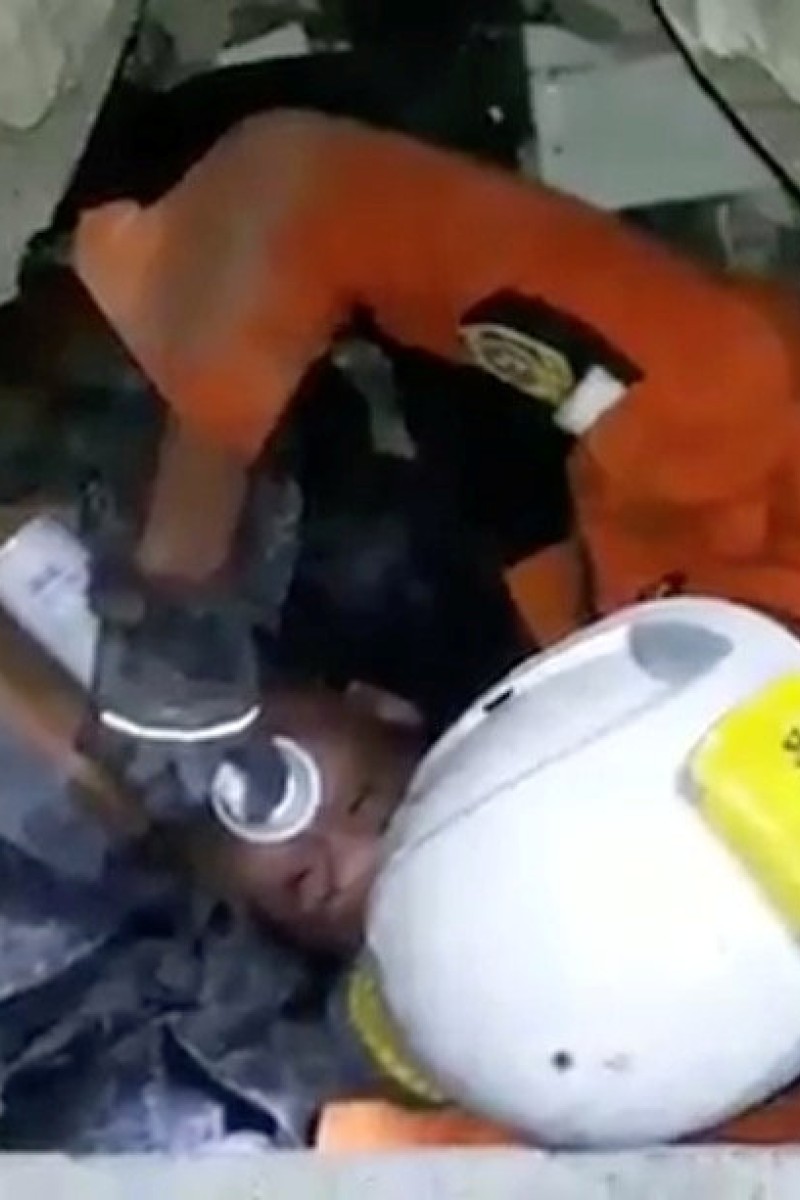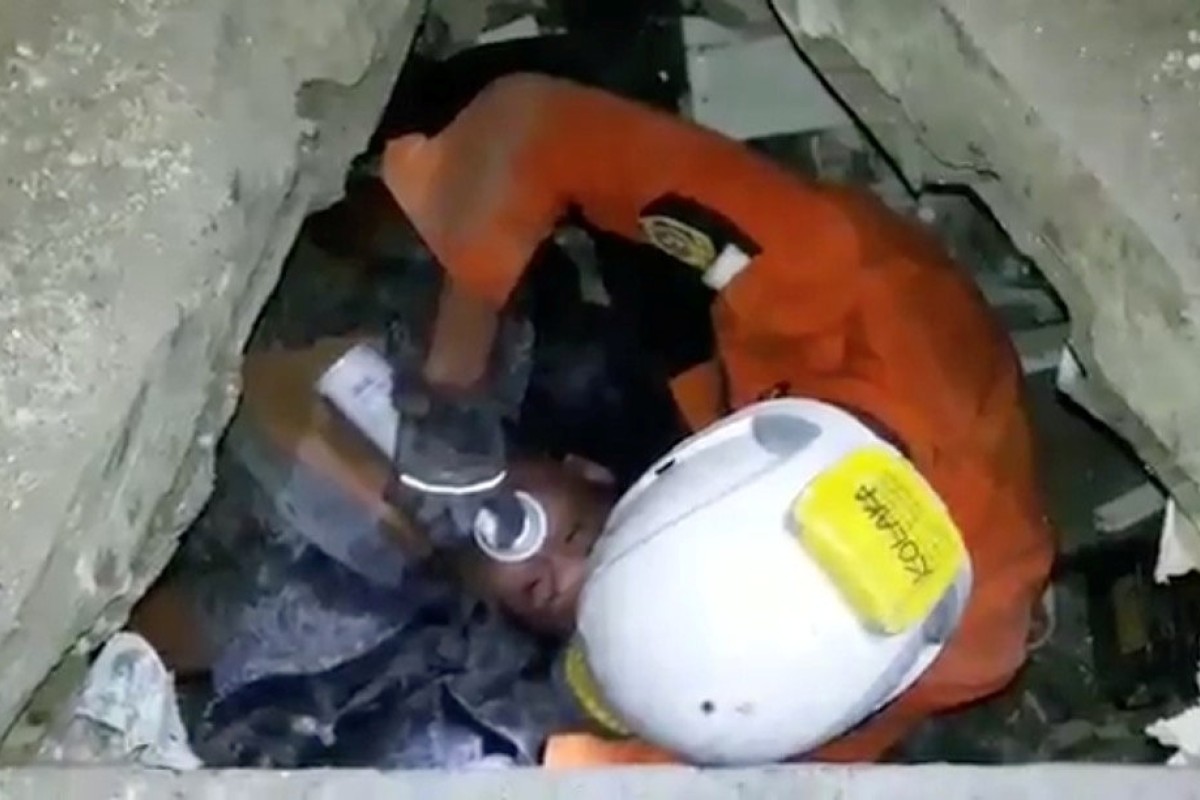
Indonesia tsunami 2018: Death toll rises to more than 1,200 on island of Sulawesi
Officials fear the death toll from Friday's double disaster of both earthquake and tsunami will run into the thousands
 A rescuer tends to man trapped in the Mandala Finance building after the disaster in Palu, Indonesia.
A rescuer tends to man trapped in the Mandala Finance building after the disaster in Palu, Indonesia.The extent of the devastation caused by an earthquake and tsunami on the Indonesian island of Sulawesi should become clearer today, as rescuers push into remote areas that have been out of contact for more than three days.
Officials fear the death toll will rise into the thousands. Indonesia has said it would accept offers of international aid, having shunned outside help earlier this year when an earthquake struck the island of Lombok.
By Monday, the number of confirmed deaths stood at 1,234.
With communications down and access by land disrupted, rescuers were struggling to reach communities closer to the epicentre of the 7.5 magnitude earthquake that struck on Friday, triggering tsunami waves as high as six metres.
A particular horror in several areas was liquefaction, which happens when soil shaken by an earthquake behaves like a liquid.
About 1,700 houses in one Palu neighbourhood were swallowed up, with hundreds of people believed buried, the national disaster agency said.
There was also mounting concern over Donggala, a region of 300,000 people north of Palu and close to the epicentre, and two other districts - with a combined population of about 1.4 million.
Initial reports from Red Cross rescuers who had reached the outskirts of Donggala district were chilling.
“The situation in the affected areas is nightmarish,” Jan Gelfand, head of an the International Federation of Red Cross and Red Crescent Societies (IFRC) office in Jakarta said in a statement.
“The city of Palu has been devastated and first reports out of Donggala indicate that it has also been hit extremely hard by the double disaster,” Gelfand said.
So far, nearly 60,000 people have been displaced and are in need of emergency help, while thousands have been streaming out of the stricken areas.
Chief security minister Wiranto said on Monday the government was trying to meet survivors’ immediate needs and would accept offers of international help.
“Right now, we need emergency aid,” Wiranto said, referring to the foreign aid that would be airlifted to Palu, 1,500 km northeast of Jakarta.
Mass burials to begin as Indonesia tsunami death toll tops 800
Commercial airlines have struggled to restore operations at Palu’s quake-damaged airport, but military aircraft took survivors out on Monday.
About 3,000 people thronged the airport hoping to get on any flight and officers struggled to keep order.
Wiranto said a navy vessel capable of taking 1,000 people at a time would also be deployed to help with the evacuation.
He said the power utility was also working to restore electricity: “Without energy, everything is crippled.”
Tsunami hits Indonesian island of Sulawesi after powerful quake
Anger and desperation among traumatised residents of Palu appeared to be simmering, with some outbreaks of looting.
“Stop hiding Mr Mayor,” was daubed on a wall in one part of Palu. Mayor Hidayat was unavailable for comment.
Numerous aftershocks have strained survivors already jangled nerves.
“I feel like the ground is still shifting. I can’t sleep,” said resident Siti Sarifah, 26.
